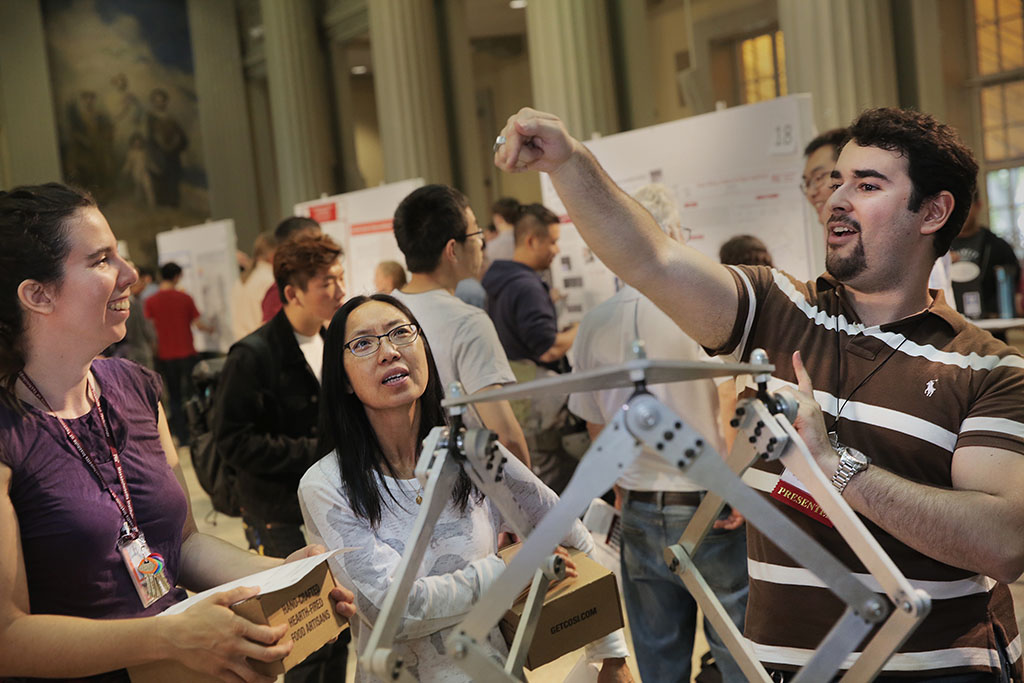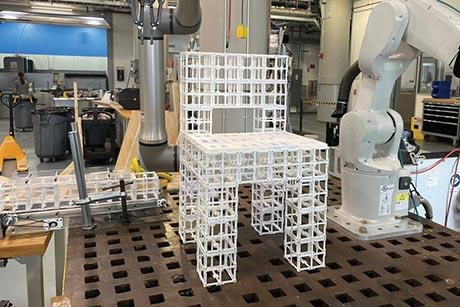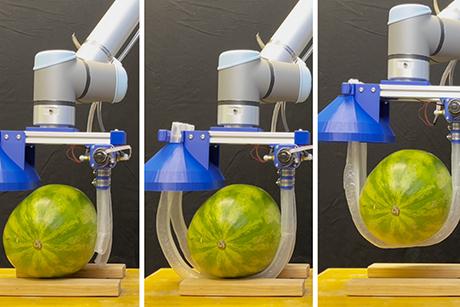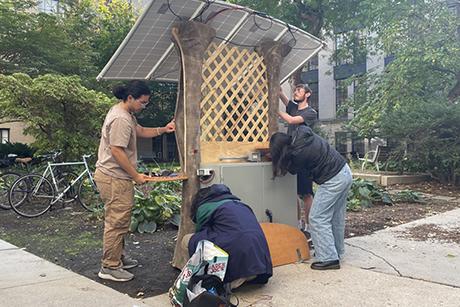Sharing the excitement of mechanical engineering research
On a Friday afternoon in September, a small clutch of people are gathered around Anthony McDougal to hear him describe his research on the biological and mechanical processes behind the brilliant colors of the butterfly. McDougal, a graduate student in mechanical engineering, raises his voice to be heard over the crowd, and motions to the posters and exhibits behind him, including several live insects at various stages of development.
“And this is only the initial stages,” he says. “If you have additional questions, please get in touch,” he adds, distributing business cards before turning his attention to the next group approaching the exhibit.
Welcome to the third annual Mechanical Engineering Research Exhibition, or MERE, an event that showcases graduate student research projects in an atmosphere that student organizers bill as “casual and low-pressure — but nonetheless exciting!” Eighty participants representing all seven of the department’s key research areas were gathered under vaulted ceilings in Walker Memorial. More than 200 people, including many local-area alumni, came to take in the showcases, which also included projects from the department’s new student-run makerspace, Makerworks.
Crystal Owens and Hangbo Zhao, also graduate students in mechanical engineering, listened closely to McDougal’s presentation. People in their own lab are working with synthetic butterfly wings, they explained. “It is cool that his research group is looking at butterfly wings as they grow, and how that happens in the real world. What they learn can probably teach us about how we can do it in our lab,” said Owens, whose work in modular Lego-based microfluidics was on display earlier.
Nearby, graduate students Rebecca Zubajlo and Alex Benjamin explained their work involving a new diagnostic method for non-alcoholic fatty liver disease. Zubajlo said she looks forward to MERE every year: “Mechanical engineering is just so huge. This is a good way to learn about what people are actually researching — to see it all under one roof,” she said.
MERE’s faculty advisor, Nicholas Xuanlai Fang, an associate professor in mechanical engineering, agrees. The high turnout helps students connect over shared interests, and it’s an important opportunity to provide incoming graduate students with a sense of what other people are up to, and what directions their own work could take. “We’ve seen research from large scale to very small scale. It is very diverse,” he said. “So far, so great.”
Sponsored by MIT’s Department of Mechanical Engineering and organized by the Graduate Association of Mechanical Engineers, the event also includes contests judged by students, postdocs, faculty, and alumni. This year’s keynote speaker was Jon Hirschtick ’83, MS ’86, founder and former CEO of Solidworks Corporation, the most popular 3-D design software in the world. He is also the founder of a new company, Onshape, the first and only full cloud 3-D computer-aided design system.
At another exhibit, MechE graduate student Moritz Graule described the use of electrostatic adhesion for the first ceiling landings of a robotic insect onto a broad set of materials, including glass, wood, and a leaf. This is a key step toward applications of flying robots — holding the potential to significantly improve their endurance, according to his research group. MERE, he said, offers a great opportunity to see what graduate students outside of his field are doing: “I really like to see so many people excited about their research.”




